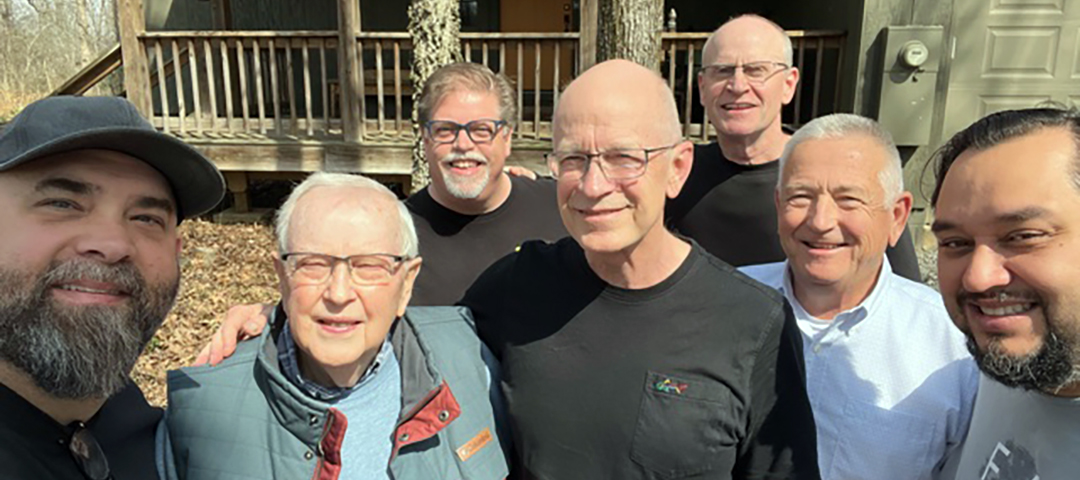
Making Disciples in Brasov, Romania 
July 5, 2022
Discipleship: Less Assembly Line and More Artisanship
July 15, 2022By Heidi Sorrells
This is the first article in a two-part series.
When considering this article, it didn’t take long for our team to think of the discipleship movement happening at South City Church in Little Rock, Arkansas. In a recent interview, Pastor Drew Cline shares about the prayer life it takes and the process that South City has been following leading to up to this moment. He’s quick to say that they are a long way from where they want to be but adamant that they are not turning back!
South City is a replant of Temple Baptist and recently celebrated five years. Over those fledgling years, the church has been committed to revitalizing under the leadership of its pastors and elders. The following is their vision and mission: “We exist to love God and ALL people by becoming authentic disciples who make disciples for the glory of God and the good of the city.” There is no question: Discipleship is WHY they exist. In fact, if you check out core values on their website, discipleship is listed first.
When asked if discipleship plays a critical role in revitalization, Drew says, “Absolutely! The cultural reality of today’s American church follows one of two directions: the culture of a traditional church (what we’ve always done), or the culture of discipleship and Great Commission vision. And one or the other will determine who you become as a church. If it’s tradition, you will follow that at all costs. If it’s discipleship, then there’s no program or tradition you won’t stop to follow Jesus in obedience.”
Drew states that decisions in revitalization and change must be made based on mission, not on preference. He points to Jesus in Matthew 16:18: “I will build my church and the gates of hell will not prevail against it . . . Jesus has promised to build his church no matter what, and that stands. Traditions and preferences always change, but the Great Commission does not.”
Sadly, discipleship is an area of poor health in many American churches. A recent study lists several alarming points in its summary, including one stating that “fewer than 5% of churches in the U.S. have a reproducing, disciple-making culture!” The study finds “a disappointingly low percentage of churches with a culture of and strategy for reproducing disciples and disciple makers.” The study goes on to say that, “we did not find clear examples of disciple-making movements in the U.S. Such churches are common in various other parts of the world [where] these churches reflect a special movement of the Holy Spirit as they rapidly multiply disciples and disciple makers.”
A third point the study makes is that pastors tend to be “overly optimistic in their assessment of the disciple-making cultures present in their churches and frequently overrate their effectiveness in discipleship and disciple making.” When asked why he thinks American church culture is this way, Drew uses the term status quo (a word he uses over and over in the interview). He cautions that status quo is the enemy of what God wants to do in lives and churches. He says, “It’s because churches keep doing what they’ve done for years and years. Unless there’s a reproducible discipleship culture happening, it usually means that the church is dependent on status quo, tradition, attendance, buildings, and programs.” In essence, if a church ceases to primarily exist to be on mission with Jesus, then poor health will occur.
I asked Drew when it became apparent discipleship needed improvement at South City and how they approached finding a solution to the problem. He points out that everyone could see Temple was a dying church, and it was apparent that they needed a vision shift from an inward focus to the mission of God and the community around them. At South City, leadership began to ask good questions and communicate that they wanted to change and serve the community as the hands and feet of Jesus, and the primary thing that led them to this awareness and any future awareness, was a climate of intentional, collective, and individual prayer.
“Prayer is key,” Drew says with conviction. South City began to meet regularly and get on their faces, literally asking God to change hearts and to give them a compassion and a vision to reach the people God had in mind for them to reach. It was a beautiful, intentional season of doing nothing else but bowing low in surrender and submission to God, and both Drew and Bro. Jerry Kidd speak of that time with great gratitude and awe. Because of the way God moved and the repentance that took place during prayer, pastors and elders were able to do the hard thing and admit there were problems with the discipleship methods at South City. Drew says, “We realized that the church hadn’t done a good job – that most American churches at large haven’t – of teaching people how to be discipled and in turn to disciple.”
Before making any change in discipleship, South City was doing something but not producing results pastors and elders were looking for: every disciple making disciples. They were using an ordered system of learning called First Principles, a series of biblically sound books through BILD International that progress and take a person from an understanding of the gospel and discipleship to an understanding of the Pauline method of disciple making and multiplication. While this discipleship method helped small groups (called CityGroups) to have a greater understanding of the Bible and a pathway for spiritual maturity, there was a growing concern among leadership about individuals owning discipleship and being obedient to actually make disciples.
Drew references the way Jesus models discipleship, which is by pouring into the twelve then pulling apart with just three to invest further. Recent studies also point to this finding, which seems to go along with what South City discovered. The study states that “programmatic strategies that have been successful in adding disciples, are not generally producing strong, disciple-making cultures.” Their suggestion is a “return to Jesus-style disciple making and embracing strategies that inspire and empower everyday Christians to become disciple makers. We need simple, effective, and reproducible models that will produce successive generations of disciple makers if followed.”
Look for part two next week for the rest of the story!

